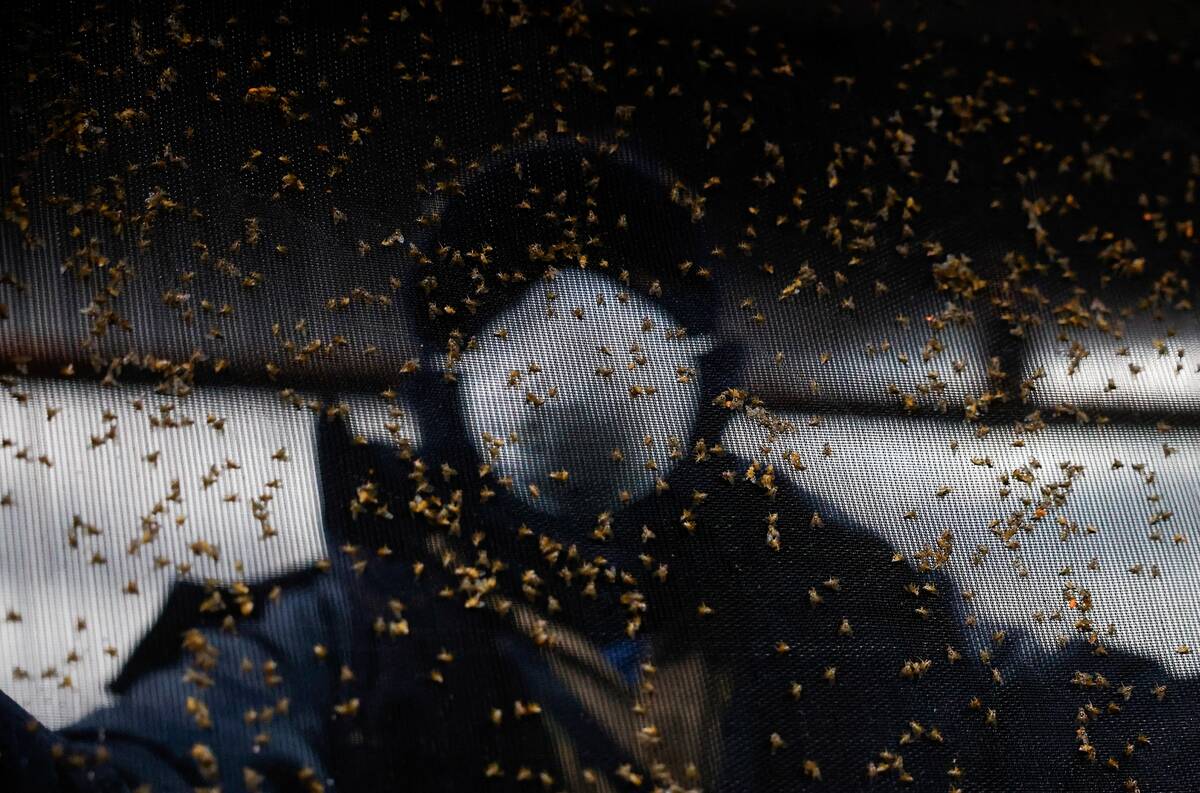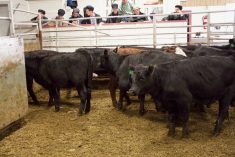Farmers who think they might be short on feed should take steps now or risk paying higher prices amid lack of supply, according to Manitoba’s forage experts.
“You may wait and find out that it’s gone up three, four or five cents a pound, or it may not even be available at the quality that you’re looking for,” warned John McGregor, forage expert with the Manitoba Forage and Grassland Association.
Why it matters: High demand for forage driven by drought conditions in the west could increase local hay prices.
Read Also

Canada too cold for New World screwworm
New World screwworm is closing in on the U.S. from Mexico, but the deadly livestock parasite isn’t likely to dig a surviving population in Canada, even if the fly species sneaks over the border.
Weather after the first cut hasn’t offered much improvement for Manitoba’s forage acres. Patchy rain early in the growing season continued through July.
“There have been these thunderstorms that have been going through, where one town gets hit and the next one doesn’t,” McGregor said. “It’s very difficult to give an overall picture of what the hay situation is because one guy on one side of the road can have an average crop and the guy across the road got only 50 per cent of the crop.”
The eastern part of the province received a good amount of rain and shortages will be unlikely there, he said, but it’s a different story in the central area.
“When we look at the amount of moisture that’s fallen in that central area, they’ve suffered dry conditions pretty well all the growing season,” he said, adding that areas along the western side of the province have been the most affected by patchy, localized storms.
Fields in central Westman have been battered by severe thunderstorms.
McGregor’s comments largely echo the province’s weekly crop reports.
According to the Aug. 1 report, most of central Manitoba had seen less than 70 per cent of normal moisture between the start of May and end of July this year. Data showed small patches of near or above average moisture around Shilo, Newdale, Deloraine, San Clara, Fisherton and Zhoda, while the remaining agricultural areas have not been so lucky.
The report noted most dairy producers have either completed or are close to completing the second cut and they report below-average yields.

Most beef producers have completed the first cut, with some grass and native hay fields remaining. Hay yields are highly variable and dependent on moisture conditions, whereas greenfeed yields are better than expected.
The southwest is not expected to get a second cut unless there is rain.
The report also notes that pastures, particularly in the southwest, are in average to below-average condition and need moisture.
“It’s just so unpredictable right now,” said Manitoba Beef Producers general manager Carson Callum. “There are certain areas where the pastures are looking really rough. But if they got a good long shot of rain, they might see some bounce back for some really good fall grazing.
“We’re also keeping a close eye on our neighbours to the west, in Saskatchewan and Alberta, to see what they potentially may be doing for their producers,” he said. “They are in more dire conditions. They’re a couple of weeks ahead in terms of their lack of moisture.”
McGregor concurs.
“Saskatchewan and Alberta are suffering,” he said. “There will be demand for forage out there.
“In the past, we’ve seen areas where, when areas have suffered severe drought, local governments will offer transportation assistance, which makes it easier to be able to afford to bring hay from long distances to your farm.”
In Manitoba, demand from western producers could affect hay availability, even if there is enough forage to feed the local herd.
To the drawing board
McGregor said when conditions are so variable across the province, each producer must decide how to manage feed. Those decisions will depend on what feed they carried from the previous year and what they’ve cut to date versus expected need through the spring of 2024.
There are strategies to get farmers over the hump.
“The cereal crops out there are starting to mature. So, there could be an opportunity to either buy and cut some greenfeed or to make arrangements with some grain farmers within a reasonable transportation distance to have them drop the straw so that you can bail and use straw in the wintertime for feed,” he said.
Corn stover is another option.
“From what I’ve seen, there’s a fairly good acreage of grain corn out there. If you make arrangements ahead of time, you may be able to take advantage of baling up some of that,” said McGregor. “That can be a very good feed for beef cattle.”
Hay market
The MFGA’s last hay market update was released in March. Alfalfa was listed at around five cents per pound, with dairy quality at eight to 11 cents. Mixed hay ranged from five to six cents per pound for good-quality alfalfa-grass mix, or three to five cents for beef quality. Grass hay ranged from three to six cents a pound.
McGregor says prices haven’t shifted much since then.
“It does look like, right now, grass hay is very similar in price to what was in the March report, but alfalfa hay is already starting to see a little bit of an increase in what people are asking,” he said. “Whether people are paying that price is unknown.”
Callum says his organization continues to monitor conditions and consider what kind of government support might be needed.
“We have requested that the province consider an AgriRecovery assessment to determine what sort of programming could be launched,” he said.
Saskatchewan and Alberta have announced their own requests for AgriRecovery assessment.
Callum is hopeful producers will get the support they need, but says the provincial election blackout period, which began Aug. 4, could pose challenges.
“The blackout period always has a bit of an impact on the ability to get programming announced, but we’ll still work with department staff as best we can during the election period,” he said.
















